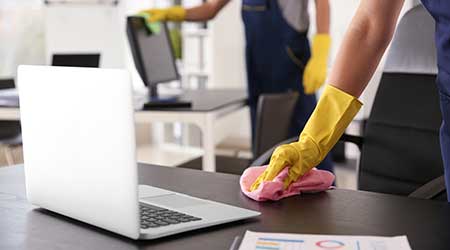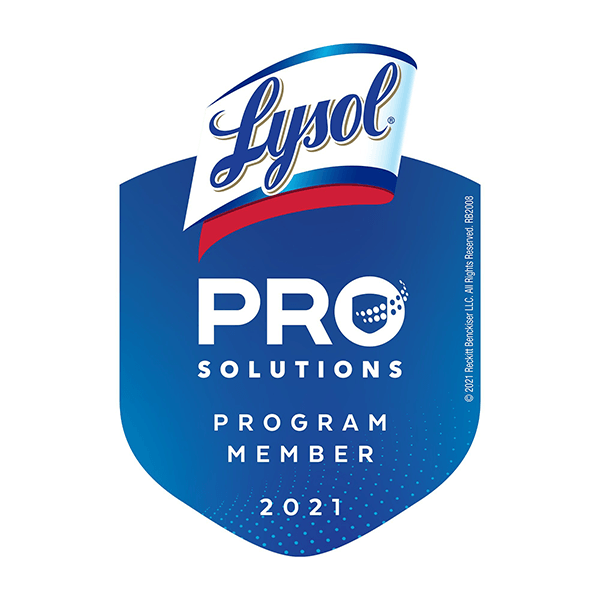
By Dr Lisa Ackerley, Director, Medical and Scientific Engagement, Hygiene, at Lysol Pro Solutions
At a time when many Americans are patronizing businesses for the first time in almost 18 months — and cases of the Delta variant of SARS-CoV-2 are on the rise — companies must cease the dangerous trend of 'hygiene theater' and adopt an effective, sustainable, cost effective and risk-based approach to hygiene interventions.

Unfortunately, the risks go beyond COVID-19. The CDC recently issued a health advisory on increased cases of respiratory syncytial virus (RSV) in certain parts of the U.S.1, and experts remain uncertain around the severity of the impending cold and flu season.
Against this backdrop, businesses can play a critical role in helping to limit the spread of these illness-causing germs that could overload the country's already highly inundated healthcare systems, while ensuring protection for customers and employees.
Tackling the Combined Threat of RSV and Flu
According to the CDC, RSV is the most common cause of bronchiolitis and pneumonia in children younger than one year of age in the U.S. and can also be serious in older adults2. The CDC issued its health advisory on June 10th, advising doctors and other healthcare providers to be on alert for increased interseasonal RSV activity across parts of the Southern U.S.3
RSV is spread like most other viruses that cause respiratory diseases — by direct contact, airborne droplets and via contaminated surfaces. RSV can survive for many hours on hard surfaces, such as those commonly found in business environments4.
Meanwhile, there is widespread uncertainty amongst experts on how severe the impending cold and flu season will be. Flu cases in 2020-21 were historically low, likely due to a range of non-pharmaceutical hygiene interventions and behaviors that were in place to slow the spread of SARS-CoV-2. Some experts believe this may lead to higher-than-expected flu cases in 2021-22 due to a decrease in natural immunity.
Organizations of all types and sizes across all sectors have a responsibility to take immediate action and help tackle the combined threat of RSV and flu. Pathogens such as these often spread with speed and ease in business environments, with contaminated hands and high-touch surfaces being sources of transmission.
Because children are vulnerable and often are the carriers of these viruses to others in the community, childcare centers, schools and healthcare facilities are a primary location for the transmission of both RSV and flu5.
Hygiene theater: A Dangerous Illusion
Hygiene theater has become popular; it gives the illusion of improved safety through indiscriminate spraying of chemicals, but in fact does little to reduce actual risk and disturbingly may even lead to off-label use. This worrying trend emerged in response to the COVID-19 pandemic and gives people a false sense of security, often through a one-off so called 'deep clean' every night.
In reality, this does very little to reduce the transfer of pathogens such as RSV and flu via frequently touched surfaces compared with implementing regular, targeted hygiene measures. In many cases, misplaced reassurance measures such as this encourage people to let their guard down or neglect more impactful steps.
Helping to protect against illness causing germs by going beyond hygiene theater is central to reassuring consumers and increasing their confidence outside of the home. 78% of Americans remain concerned about germs while away from home6 and 88% expect businesses to implement protective measures7. Even after the COVID-19 vaccine roll-out, 57% of vaccinated people are still very concerned about germs8, with 72% of people intending to follow the same cleaning and disinfection behaviors they adopted during the pandemic9.
Cleaning and disinfection must be based on scientific, risk-based protocols that are rigorously and continuously assessed and created with the specific business environment in mind, considering the key moments — the times and places where targeted hygiene needs to be applied. But remember, hygiene includes not just cleaning and disinfection, but also hand hygiene, which should be carried out when it is most needed, such as when arriving at work, and of course after using the bathroom. Hand sanitizer comes into its own at points where wash basins are needed but not readily available.
Businesses seeking to set best practice should consider the following:
- Germs are invisible, so some surfaces need to be disinfected as well as cleaned, as it is hard for businesses to ascertain if someone carrying an illness may have entered their premises.
- Rather than simply creating hygiene theater and carrying out unnecessary large-scale disinfection, businesses should implement targeted hygiene protocols that are informed by science and break the chain of infection.
- These protocols should be centered around cleaning and disinfecting high-touch surfaces such as door handles, elevator buttons, reception desks, bannisters and escalator handles particularly within high-traffic areas, amongst other appropriate measures such as encouraging staff and customers to wash or sanitize their hands at critical times, for example upon arrival at the premises.
- If the office operates hot-desking, then it is key to disinfect these areas before the start of each day.
- As part of their best practices, businesses should use EPA-approved products for surface disinfection.
Consumers and staff alike want to live in a cleaner, safer world and have the confidence to leave home and return to work, retail and hospitality — and businesses should help protect them as much as possible. As an industry we have a collective responsibility to make hygiene theater a relic of the past and make hygiene a sustainable and effective solution to help protect us all.
1 Centers for Disease Control and Prevention, Health Alert Network, Increased Interseasonal Respiratory Syncytial Virus (RSV) Activity in Parts of the Southern United States. Retrieved on June 24th, 2021
2 Centers for Disease Control and Prevention, Respiratory Syncytial Virus Infection (RSV). Retrieved on June 24th, 2021
3 Centers for Disease Control and Prevention, Health Alert Network, Increased Interseasonal Respiratory Syncytial Virus (RSV) Activity in Parts of the Southern United States. Retrieved on June 24th, 2021
4 Centers for Disease Control and Prevention, RSV Transmission & Prevention. Retrieved on June 24th, 2021
5 Kamigaki et al., BMC Infectious Diseases, 2015
6 Reckitt Toluna Tracker, Wave 16 (6/7-6-13)
7 Reckitt survey, US March 2021 via AskSuzy, n=500
8 Reckitt Custom StreeBees Tracker, 4 weeks to 12 May, 2021
9 Reckitt Toluna Tracker, Wave 16 (6/7-6-13)

 The Down and Dirty on Cleaning in Virus Season
The Down and Dirty on Cleaning in Virus Season How Surfactant Use is Expanding in Commercial Cleaning
How Surfactant Use is Expanding in Commercial Cleaning Maximize Your Margins: Learn How to Automate Pricing and Track Rebates
Maximize Your Margins: Learn How to Automate Pricing and Track Rebates